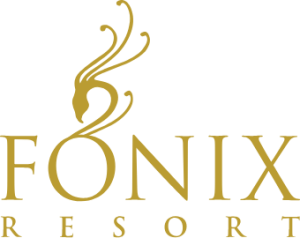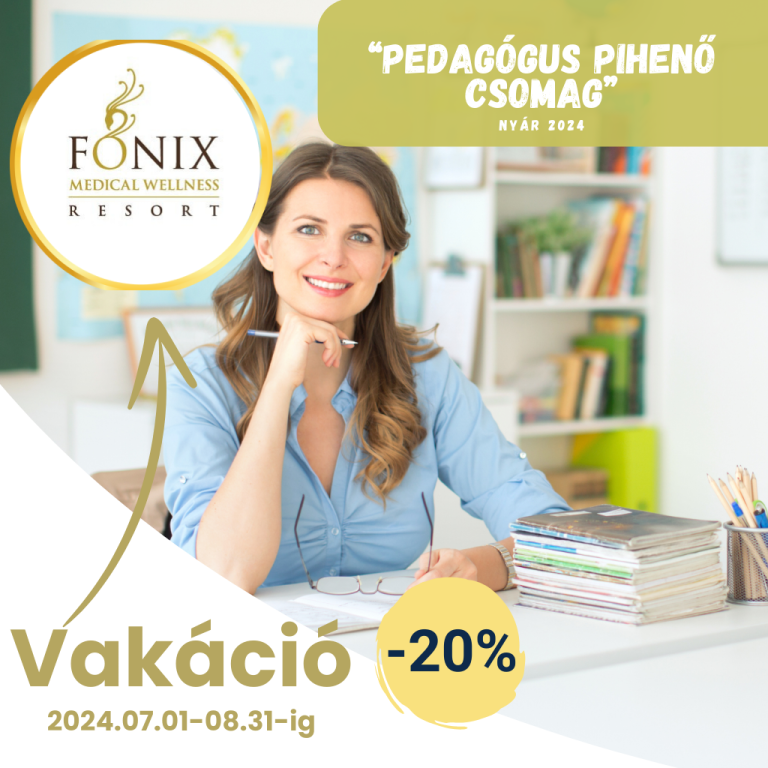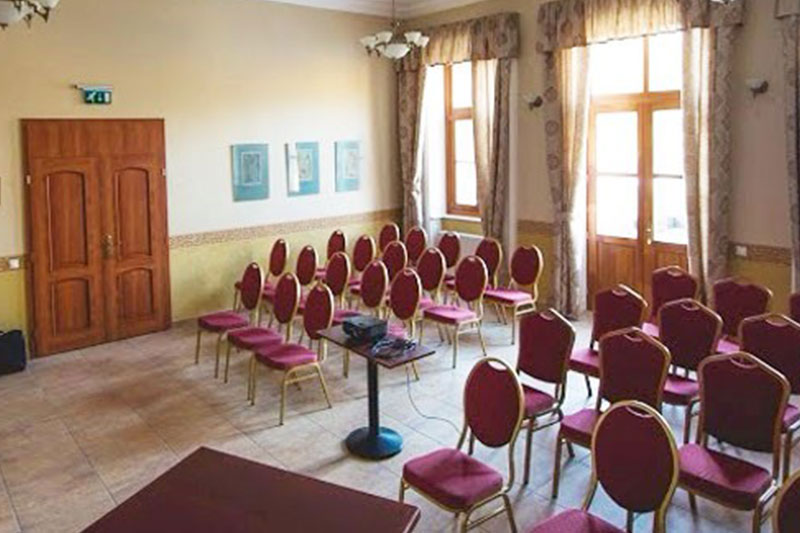Coming from the direction of Chitar, you pass a long old barn on your left. On the right, in the huge park, you can see the neoclassical-style two-storey castle, built in 1894 by Count István Géza Majláth, based on the design of architect József Hubert. A II. After World War II, the nationalised castle was used as a pioneer lung hospital, and from the 1960s it housed the Lung Institute.
Many of the buildings of the former manorial centre can still be seen: the castle, opposite the castle, the house of the steward, and the house of the steward at the bend in the road. The servants’ houses, the stables, the workshops that once repaired the machinery still stand. The school, built in 1900, is situated between two blocks of servants’ houses.

The Count travelled the world and saw a lot, collected a lot, and was sensitive to beauty. In addition to his luxuriously built castle, he also established modern farm buildings for the conditions of the time. The park around the castle was designed with the same care, and the species of trees to be planted were chosen with great skill. From his travels he brought back not only works of art, but also plants, saplings and shrubs. He has tried to put his experience of the world into practice at home.
When designing the park, the spatial arrangement of the trees and the system of walkways in the park were carried out according to plan. The plant population is still species-rich, although in recent decades inappropriate tree species have been planted in an ill-considered way. Well-intentioned interventions, untrained in park design, have tended to harm the environment. The park’s existing trees are Caucasian wing nut, eastern spruce, Turkish hazel, maple, oak, black pine, Japanese acacia and white acacia. The most important of the newly planted tree species are the birch trees, the lily trees at the entrance and the tulip tree.
Until September 2006, it was operated by the Nógrád County Municipality as a lung sanatorium with 60 active and 40 chronic beds. In the course of the county’s new health care structure, the institution was functionally merged with the Kenessey Albert Hospital in Balassagyarmat, and the County Government decided to sell the building.
The new owner is Főnix Resort Kft., a member of the Opinion Group, which operates the complex as the Főnix Wellness Resort by reimagining the former castle sanatorium.
He was the Royal Master of the Court, then the Chancellor of the Hungarian Royal Court, a judge of the country, President of the Royal Curia and the House of Lords, and the President of the Court of St. Grand Bishop of the Order of St Stephen.
He was the parliamentary envoy of Baranya County, and after the 1839-1840 Diet he was elected the first deputy governor of Baranya County.
After the Diet, he was appointed administrator of Baranya County, a position which was very unpopular at the time, only György Apponyi gr. court chancellor for the sake of his political comrade-in-arms. He tried to keep away from this work, during which time he spent six months studying in the western countries of Europe. In 1847, as the appointed chief bailiff of Baranya county, he appeared at the National Assembly, but fought together with Széchenyi against Kossuth without success.
He retreated into private life from the storms of the 1848-49 War of Independence, and during the absolutist period he was engaged in his own economic affairs, in the zealous advocacy of social reforms and public associations, and in his studies, but he was one of those who resisted all the temptations of the absolute government of the time and refused to take office.
At the Vienna conference. accepted the invitation to join the strengthened Imperial Council in 1861 after some reluctance, but only in order to stand up for the rights of his country, together with his more courageous and independent conservative colleagues (Emil Dessewffy, Pál Sennyey, János Barkóczy, etc.), and to form an opposition to the Viennese tendencies.
In 1865, however, he was again at the head of the government as Chancellor-General at the Court, and in the period preceding the complete restoration of the Constitution and the coronation he was effective in resolving Hungarian issues in a favourable manner. The conciliation of 1867 naturally led to the formation of a new government, as a result of which Majláth replaced the role of the leading government official with that of the chief magistrate and president of the Diet.
His high education and love of science attracted him greatly to the pleasures of science and literature. He was often present at the meetings of the Academy and the Kisfaludy Society, and his main pride was that he was not only a director but also an honorary voting member of the Academy of Sciences.
In 1893 he was the victim of robbery and murder. In his own apartment in the Batthyány house in the Buda Castle, he was attacked by vagrants at night and strangled to death. His attackers were let into the apartment by his own hussar.
1860. was born on 14 January in Pécs, the third son of György Majláth, a judge of the country. He was educated in Buda until the age of 14, and in 1874 he entered the Fiume Naval Academy. After completing a four-year course at the Academy, he actually entered service in 1878 as a naval lieutenant. He was in the Navy for sixteen years, during which time he sailed almost all over the world on various warships.
In 1882, he took part in the Krivosce (Dalmatian) campaign on the armoured caisson ship Albrecht. In 1889, the Saida was on early service, sailing around Africa. In 1890-1891, after leaving the naval service, he made a private voyage of study around the world, travelling throughout India, the lower part of the Indian subcontinent, Java, China and Japan, the Sandwich Islands, North America, and then returned home through England, Holland and France. He gave a lecture about this trip, especially about his experiences in Japan, at the Hungarian Geographical Society. He also served on the Danube monitors for several years, and in 1893 he became commander of the newly equipped Szamos monitor.
In 1894, he married Countess Marietta Zichy, daughter of Count Nándor Zichy, and from then on he managed his Nógrád County estates himself. He was a Catholic autonomous representative in the Nógrád district of the Archdiocese of Esztergom. From 1894, he was a member of the House of Lords. In the 1905 general elections, the Szécsényi district elected him as a deputy on an extraordinary party platform. In September of the same year, he joined the People’s Party. The 1906. was elected in the general elections of 2007, also in the district of Szécsény, with a majority of 945 votes, on a People’s Party platform. He is also a member of the Defence Forces and Queen Elizabeth Statue Committees.
In 1917 he took up the office of archbishop of Nógrád county, and his public work was only prevented by the outbreak of the revolution, when he retired from politics, and did not return to public life until his death in 1933.
In the Middle Ages, Gárdony puszta was still listed as an independent village in the censuses. According to sources, it also had a church. It was depopulated and became a desert during the Turkish wars. The vast boundaries of the wilderness were only defined by the successive landowners in the late 18th century, began to be cultivated in the first half of the 19th century. The well-equipped manorial centre was made by Count Géza Mailáth István István, who acquired the Gárdony estate by marriage in 1894. Until 1912 the name of the village was Gárdony (in the Middle Ages Gárdon), from 1912 to 1956 Majláthgárdony, from 1956 Nógrádgárdony. In the 18th century, based on the number of births per year, no more than 20-25 families lived in Gárdony.

In 1880, Nándor Zichy (his wife Lívia Zichy) bought the farm, which was already well equipped with working tools. Less than a decade and a half later, he became the new owner of the Gárdony wilderness. Nándor Zichy’s daughter, Marietta, was married to Count István Géza Majláth Székhelyi in 1894. Géza Majláth had the ground floor mansion built for the Torkos family – based on Miklós Ybl’s design – partly demolished and partly remodeled, and replaced by a one-storey neo-Renaissance building designed by architect József Hubert. He extended the Gárdony farm with new servants’ houses, acquired more modern farm equipment, and improved the electricity supply to the buildings in the wilderness with a generator.
According to the available data, Géza Majláth took over a not undeveloped farm from his predecessors in 1894. In 1853, Mihály Torkos, a young officer born in Eger, was employed in Gárdony to manage the day-to-day running of the farm. According to the registers kept in the parish of Marcal, there was no shortage of labour. Between 1870 and 1880, more than fifty heads of family worked on the Gárdony estate. Of these, 30 worked as hired labourers, 15 as drivers, 6 as shepherds and 4 as shirkers. The list of servants already included Chitarians, who had been reduced to this fate because of the fragmentation of the ancestral land. Most of the people from the village were from the Csikány, Sebők and Pénzes families. Most of the employees moved to the wilderness from the villages of Rimóc, Varsány, Sipek and Kelecsény. There were also those who nominated Csalomia, Csesztvét, Herencsény, Bercel, Alsósztregová as their former place of residence.
A II. After the Second World War, part of the land of the defunct manors was divided between the poorer families of the village and the wasteland, and the cooperative, established in 1950, became the owner of the wasteland.

Recharge your batteries in a wellness hotel, where we don’t just focus on pampering, but also on health. In a castle hotel where you can feel the XIX. century, the legacy of the Zichy and Majláth families, yet it is the XXI. We are surrounded by the comforts of the 21st century.

25 000 HUF / 1 person / NIGHT-From NIGHT with FREE ADVANCEMENT20% discount!

33 050 HUF / 1 person / NIGHT-FREE with package offer!

Discover the comforts of the aristocracy and life in a castle! The 37-room Phoenix Resort offers Petit, Standard, Superior rooms and 1 Suite. Each room overlooks the castle’s seven-hectare park with mature trees.

(2 nights)

(3 nights)

(min. 4 nights)

The Főnix Wellness Resort provides an excellent opportunity for one-day or multi-day meetings, standing receptions, team-building trainings, mini-conferences, indoor and outdoor trainings.

The Főnix Wellness Resort provides an excellent opportunity for one-day or multi-day meetings, standing receptions, team-building trainings, mini-conferences, indoor and outdoor trainings.

Ever dreamed of a wedding where you say "I do" in the garden of a beautiful castle? You have found the ideal location, less than an hour from Budapest, in the picturesque hills of Nógrád.

The Főnix Wellness Resort provides an excellent opportunity for one-day or multi-day meetings, standing receptions, team-building trainings, mini-conferences, indoor and outdoor trainings.
This website uses cookies to enhance your experience. Some are essential for site functionality, while others help us analyze and improve your usage experience. Please review your options and make your choice.
If you are under 16 years old, please ensure that you have received consent from your parent or guardian for any non-essential cookies.
Your privacy is important to us. You can adjust your cookie settings at any time. For more information about how we use data, please read our privacy policy. You may change your preferences at any time by clicking on the settings button below.
Note that if you choose to disable some types of cookies, it may impact your experience of the site and the services we are able to offer.
Some required resources have been blocked, which can affect third-party services and may cause the site to not function properly.